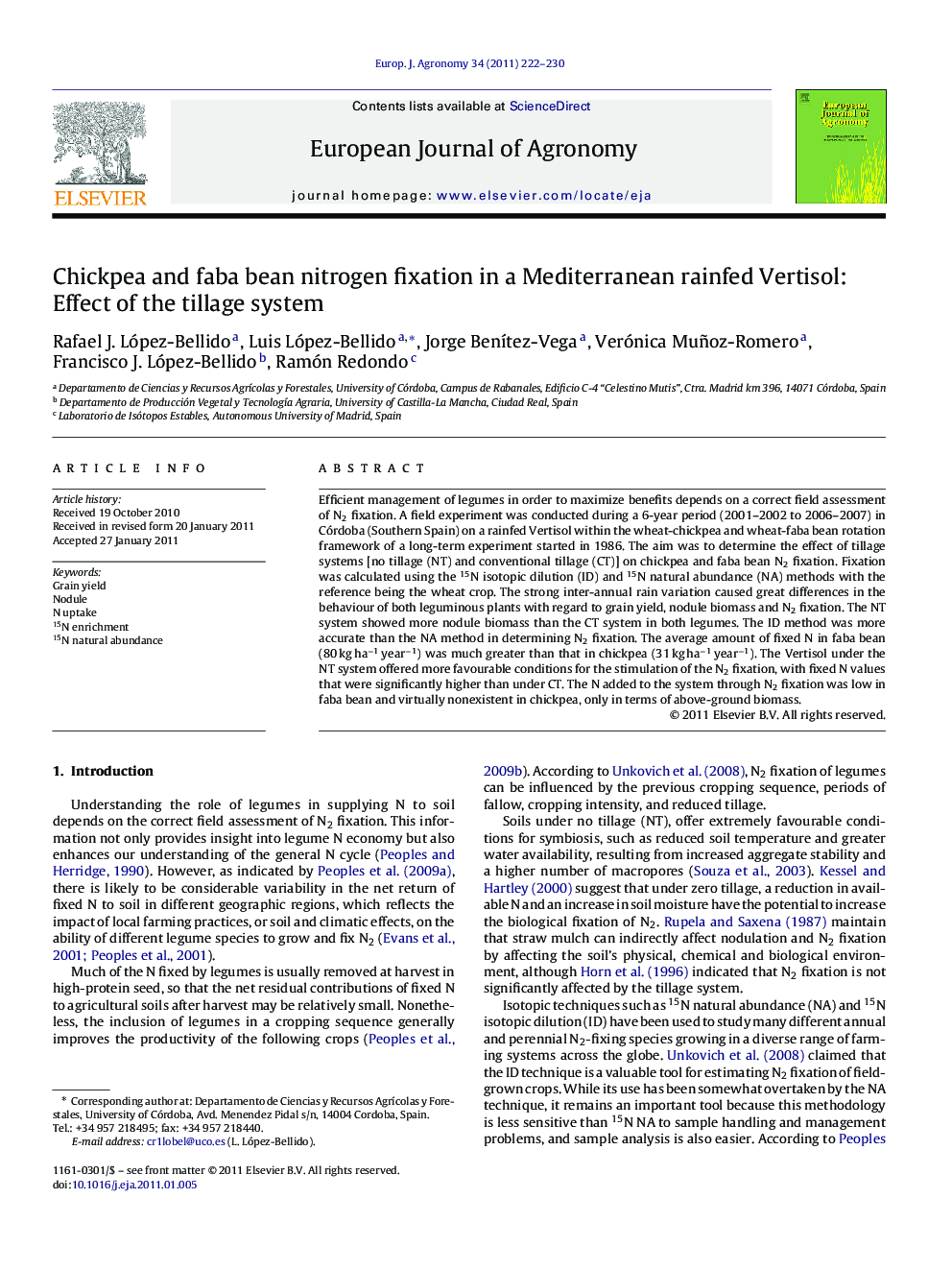| Article ID | Journal | Published Year | Pages | File Type |
|---|---|---|---|---|
| 4509333 | European Journal of Agronomy | 2011 | 9 Pages |
Efficient management of legumes in order to maximize benefits depends on a correct field assessment of N2 fixation. A field experiment was conducted during a 6-year period (2001–2002 to 2006–2007) in Córdoba (Southern Spain) on a rainfed Vertisol within the wheat-chickpea and wheat-faba bean rotation framework of a long-term experiment started in 1986. The aim was to determine the effect of tillage systems [no tillage (NT) and conventional tillage (CT)] on chickpea and faba bean N2 fixation. Fixation was calculated using the 15N isotopic dilution (ID) and 15N natural abundance (NA) methods with the reference being the wheat crop. The strong inter-annual rain variation caused great differences in the behaviour of both leguminous plants with regard to grain yield, nodule biomass and N2 fixation. The NT system showed more nodule biomass than the CT system in both legumes. The ID method was more accurate than the NA method in determining N2 fixation. The average amount of fixed N in faba bean (80 kg ha−1 year−1) was much greater than that in chickpea (31 kg ha−1 year−1). The Vertisol under the NT system offered more favourable conditions for the stimulation of the N2 fixation, with fixed N values that were significantly higher than under CT. The N added to the system through N2 fixation was low in faba bean and virtually nonexistent in chickpea, only in terms of above-ground biomass.
Research highlights► The ID method was more precise than the NA method in determining N2 fixation. ► The fixed N in faba bean was much greater than that in chickpea. ► The N added to the system was lower in faba bean and virtually nonexistent in chickpea.
